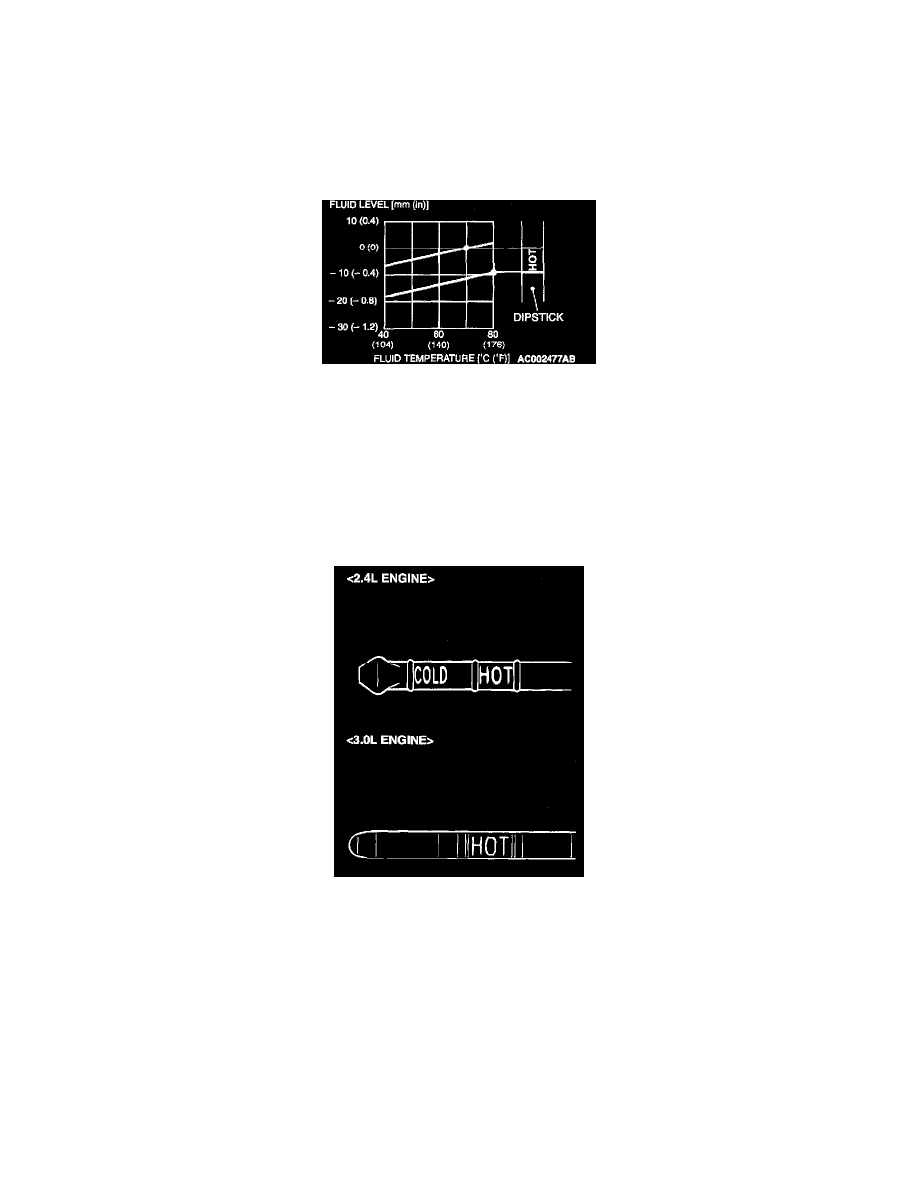Sebring LX Coupe V6-3.0L VIN H (2002)

Fluid - A/T: Testing and Inspection
Standard Procedures
F4A51 - Automatic Transmission
A/T FLUID CHECK
1. Drive the vehicle unit the A/T fluid temperature rises to the normal temperature [70 - 80°C (158 - 176°F)].
NOTE: The A/T fluid temperature is measured with MUT-II
NOTE: If it takes some amount of time until the A/T fluid reaches its normal operating temperature [70 - 801. (158 - 1940F)], check the A/T fluid
level by referring to the left diagram.
2. Park the vehicle on a level surface.
3. Move the selector lever through all positions to fill the torque converter and the hydraulic circuits with fluid, and then move the selector lever to
the "N" position.
4. After wiping off any dirt around the dipstick, remove the dipstick and check the condition of the A/T fluid.
NOTE: If the A/T fluid smells as if it is bunt, it means that the A/T fluid has been contaminated by fine particles from the bushings and friction
materials, a transaxle overhaul and cooler line flushing may be necessary.
5. Check that the A/T fluid level is at the "HOT" mark on the dipstick. If the A/T fluid level is lower than this, pour in more DIAMOND ATF SP-III
until the level reaches the "HOT" mark.
NOTE: If the A/T fluid level is too low, the oil pump will draw in air along with the A/T fluid, which will cause bubbles to form. If the A/T fluid level
is too high, rotating components inside the transaxle will change the fluid and air into a foamy liquid. Both conditions (level too low or too
high) will cause the hydraulic pressure to drop, which will result in late shifting and slipping of the clutches and brakes.
NOTE: In either case, air bubbles can interfere with normal valve, clutch, and brake operation. Also, foaming can cause A/T fluid to escape from the
transaxle vent where it may be mistake for a leak.
6. Securely insert the dipstick.
NOTE: The A/T fluid should always be replaced in the following conditions: When troubleshooting the transaxle When overhauling the transaxle
When the A/T fluid is noticeably dirty or burnt (driving under severe conditions)
